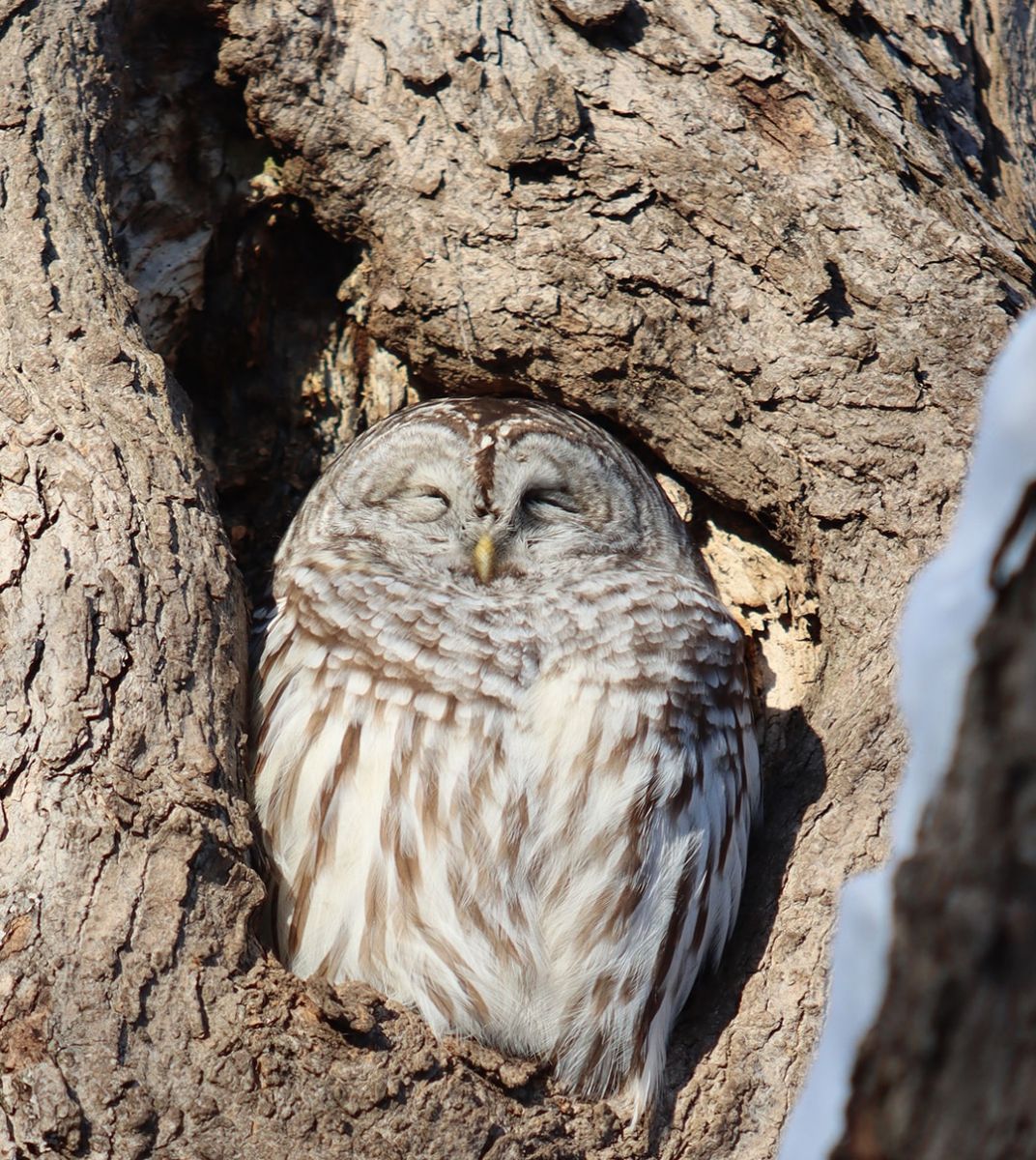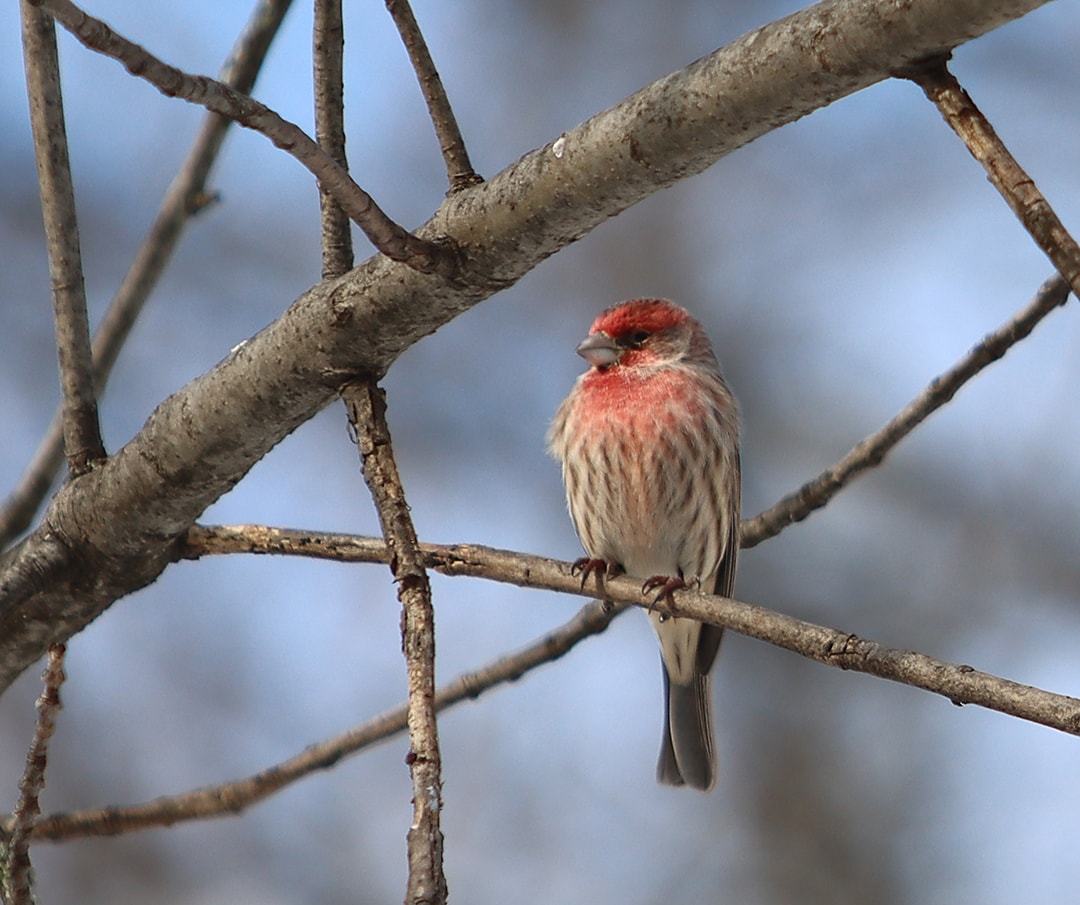The Snowbirds of Mount Royal
- February 09, 2021

Barred owl
Photo: Carl Lemyre
Although several species leave the mountain once the cold weather settles in, certain birds from the boreal forest and tundra fly south to spend winter here with us. These include the common redpoll, white-winged crossbill, pine grosbeak and bohemian waxwing.
Other species live year-round on Mount Royal such as the white-breasted nuthatch and black-capped chickadee, a small hyperactive bird of just 10 g, which is often observed in the winter despite the cold.
In winter, the chickadee’s diet is plant- and animal-based. The chickadee has developed various skills for feeding itself during the season when most insects are inactive. In fact, it roots for sleeping spiders and insect eggs and larvae hidden under the bark of trees. The chickadee also feeds on seeds stuck to tree and shrub bushes and on sunflower seeds provided in park feeders.

Black-capped chickadee
Photo: Carl Lemyre
Winter also corresponds to the start of the breeding season for nocturnal birds of prey, such as the barred owl, eastern screen owl the great horned owl that court each other between February and April, and for whom the period nesting begins around March. Barred owl sightings in the park are common. You might have seen one sunbathing in a tree hollow in the middle of winter or heard it hoot in the early evening at the summit or in the marshlands.
In recent years, the presence of the eastern screech owl has also been recorded in Mount Royal Park and Tiohtià:ke Otsira’kéhne Park on Outremont Summit. It favours areas in the forest where it can easily perch to observe the surroundings.

Eastern screech owl
Photo: N. Porlier
During the breeding season, owls are very sensitive to disturbances and quick to leave the nesting area. According to the Cornell Lab of Ornithology, if the female is disturbed during this period, there is a high chance that she will abandon her nest. It is thus very important to keep a respectful distance if you spot one.
With a little luck, you might also spot the following species, which have been frequently observed on Mount Royal each winter since 2005-2006*:
- Black-capped chickadee
- American goldfinches
- White-breasted nuthatch
- House finch
- Downy woodpecker
- Northern cardinal
- Hairy woodpecker
- Dark-eyed junco
- American crow

Cardinal
Photo: Carl Lemyre
The 5-Star Feeders in the Park
Looking for the perfect place to observe winter birdlife? Take a tour of the 7 bird feeders along Olmsted Path between Smith House and the Mount Royal Chalet and on the summit loop (2.2 km). Follow the yellow trail on the map of Mount Royal Park.
Installed and maintained by our conservation team and hard-working volunteers, the feeders play a vital role from November to April, especially for collecting data on bird populations and supplying food in the winter. Find out more in this short video (in French).
Citizen Science to the Rescue
Launched in 1976 by Ontario ornithologist Erica Dunn, Project FeederWatch initially counted on just over 500 participants to do weekly surveys of birds at feeders from November to April in Ontario. It was in 1987 that the Cornell Lab of Ornithology joined the project to expand its reach and consolidate observations from across North America. Today, FeederWatch counts on the participation of more than 20,000 volunteers every year, monitoring thousands of feeders and over 100 bird species.

House finch
Photo: Carl Lemyre
Winter is the perfect time to develop your birdwatching skills in Mount Royal Park. Enjoy!
Les amis de la montagne wishes to thank volunteer photographer Carl Lemyre for his contribution to this article.
